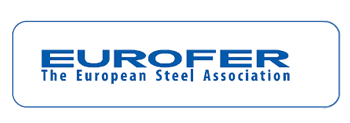
“The 5% rise in the quota was programmed into the regulation that implemented the EU safeguard measures. However, there is an ongoing review that should take into account the changed market situation. The 5% increase has not been removed despite the damage caused by surging imports and means the Commission has ignored the industry’s legitimate concerns about increasing the quota in a falling market. This is irrational as it will make the review more complicated”, said Axel Eggert, Director General of the European Steel Association (EUROFER).
Recent weeks have seen announcements of closures and steel plant idling across Europe, putting thousands of jobs at risk in a sector that, in all, accounts for 2.6 million direct, indirect and induced jobs in the Union.
“We, as a sector, have called on policy makers not to raise the quota, as the stepped increase is out of line with the size and direction of the market. Coming from 2018, when imports boomed by a record 12% bringing their share of the market to an all-time high, it is extraordinary that the Commission would not act to at least postpone this pre-programmed change until the review has been terminated”, emphasised Mr Eggert.
The Commission will bear a large degree of responsibility towards steel industry workers put at risk as the sector shrinks unnecessarily – despite firm warnings by producer companies and Member States. EUROFER has made a series of recommendations designed to improve the functioning of the safeguard itself. These include more comprehensive country-specific quotas, caps on the consumption of the residual quota by individual countries, and the automatic inclusion in the measure of developing countries that exceed the 3% threshold.
Mr Eggert continued, “As it stands, for a large part of our industry, the safeguard is already barely functioning for its intended purpose. The rise in the quota – which is already being consumed apace with import volumes already ‘awaiting allocation’ – is merely the cherry on the imported cake”.
“We call on the Commission to heed our call and those of Member States that have already expressed concerns about the rise – and to respond by undoing this out-of-step expansion before it further undermines the safeguard and the sector that relies upon it”, concluded Mr Eggert.
EUROFER Manifesto – Steel 2019-2024
This manifesto sets out the footprint and importance of European steel to the EU economy, and explains why we need to make the industry more innovative, skilled and sustainable while also ensuring there is a robust trade policy that defends the sector against the challenges posed by overcapacity and trade surges. The manifesto can be downloaded: here
New infographic explains EU steel safeguard
The EU put in place a safeguard in the wake of the US’ decision to impose a 25% tariff on all steel product imports into the US. This action, when seen in the context of massive global steel production overcapacity, risked causing massive deflection of steel volumes to the EU market, which an open market. Imports surged in 2018, rising by 12%. This infographic explains how the safeguard works and identifies some of the problems with it. The images are below and a PDF version can be downloaded: here
About the European Steel Association (EUROFER)
EUROFER AISBL is located in Brussels and was founded in 1976. It represents the entirety of steel production in the European Union. EUROFER members are steel companies and national steel federations throughout the EU. The major steel companies and national steel federations in Switzerland and Turkey are associate members.
About the European steel industry
The European steel industry is a world leader in innovation and environmental sustainability. It has a turnover of around €170 billion and directly employs 330,000 highly-skilled people, producing on average 160 million tonnes of steel per year. More than 500 steel production sites across 22 EU Member States provide direct and indirect employment to millions more European citizens. Closely integrated with Europe’s manufacturing and construction industries, steel is the backbone for development, growth and employment in Europe.
Steel is the most versatile industrial material in the world. The thousands of different grades and types of steel developed by the industry make the modern world possible. Steel is 100% recyclable and therefore is a fundamental part of the circular economy. As a basic engineering material, steel is also an essential factor in the development and deployment of innovative, CO2-mitigating technologies, improving resource efficiency and fostering sustainable development in Europe.
